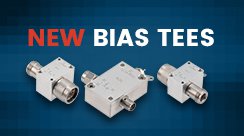High-pass Filter 101

Frequency selection is a key aspect of RF system design. There are often times where it is desirable to ensure only a signal energy from a limited spectrum enters or progresses through an RF signal chain. In the case where frequencies below a certain cutoff point should be diminished in the signal chain, Waveguide High Pass Filters or Coaxial High Pass Filters are essential. High-pass filters present a high level of reflective or absorptive attenuation to all frequencies below the cutoff frequency. Based on the quality and design of a high-pass filter, nearly all of the signal content and even noise of frequencies under the cutoff can be removed.
As all RF filters present loss in the passband, high-pass filters also result in some loss in the passband. Other performance metric considerations are the extent of the filter rejection, or out-of-band attenuation. No filter is ideal, and high-pass filters don’t have a perfect cutoff under the frequency limit. The filter attenuation gradually increases over frequency under the cutoff at a rate that depends on the filter design, complexity, and quality. More expensive and specially designed filters will present better filter response. However, for many high-pass filter applications, high performance isn’t required, and adequate attenuation and filter response steepness can be achieved without extensive complexity. There are a variety of high-pass filter design approaches that can be achieved with a simple RC/LC lumped element circuit, resonator, or relatively simple active circuits.
High-pass filters are often used when there is low frequency signal content that may enter the signal path. For instance, there may be a variety of lower frequency systems on a platform or congestion at lower frequencies that is beneficial to remove before attempting to apply further conditioning to a signal. A key benefit of high-pass filters for some applications is that they block DC and very low frequency signals, such as analog or power signals, and allow RF, microwave, and millimeter-wave signals to pass. Depending on the operating frequency range of a system, a high-pass filter may be used to remove interference and noise for all frequencies below the operating frequency, which removes the concern of the most common naturally occurring interference/noise phenomenon.
As there are many common forms of interference at lower frequencies, such as power line noise, electrostatic discharge (ESD), high pass filters are used extensively in testing and practical RF circuits. A high-pass filter may also be useful in very wideband systems where a wideband bandpass filter may be less desirable to greater complexity and possibly higher passband attenuation.




